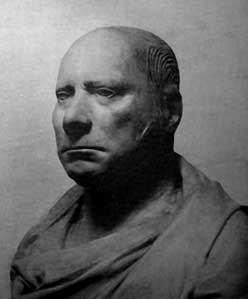
Notes for field excursions to the birthplace of stratigraphy
Four Sites to Visit in the City of Bath
Motor vehicle access to the inner streets of Bath is generally inconvenient. Two sites, No.29 Great Pulteney Street and the corner house on Trim Street, are best approached on foot. Two other sites, Bloomfield Crescent and Batheaston, are more distant from the centre and are accessible by a compact vehicle. A street map marked with National Grid co-ordinates could be useful, for example the Ordnance Survey Bath City Map scaled at 1:10,000.
No.29, Great Pulteney Street
The whole length of this street (ST 754652) is part of the Bathwick development scheme commenced in 1788 by the architect Thomas Baldwin. The house numbered 29 became the Bath residence of one of Smith's supporters, the Revd Joseph Townsend (1739-1816), Rector of Pewsey, Wiltshire. He was a considerable author in medicine and cosmogony, ‘standing six foot six in his socks, with a voice to match’. His Character of Moses Established, which came out in 1813, is expensively sought today for its early printed version of Smith’s stratigraphy.
In 1926, a bronze plaque (Figure 1) was affixed to the house, inscribed with these words:
‘In this house William Smith the Father of English geology dictated the Order of the Strata December 11, 1799’
The date on the plaque should read June 11, 1799, not December 11. According to Benjamin Richardson (1758-1832), who was then present, Smith was in Bath for the annual meeting in June, 1799, of the Bath Agricultural Society; and the gathering at Townsend’s residence took place at that time, only a few weeks after the termination in April of Smith’s employment with the Somersetshire Coal Canal Company.
Richardson had a high regard for Smith’s abilities, and was first among his mentors and advocates. It was Richardson who wrote out the Table of Strata from Smith’s dictation, and it was this manuscript in Richardson’s handwriting that Smith donated years later to the Geological Society of London. This Table (Figure 2), taken from John Phillips’s Memoirs of William Smith published in 1844, lists the twenty-three strata named in the original MS. According to Richardson’s recollection, after writing out the Table of Strata, additional copies were given away ‘in consequence of Mr. Smith's desire to make so valuable a discovery universally known’, which discovery, of course, was the special relationship found to exist between particular strata and particular fossils contained within them. Smith had already demonstrated the truth of this to Richardson and Townsend in the country south and west of Bath, notably at Dundry Hill. Smith’s perception of predictable sequences of identifiable strata enabled a more scientific approach to coal prospecting, which was then a focus of huge activity in pursuit of fuel to stoke the furnaces of industry and to fill the smoking millions of urban grates. Sinking and boring for coal at Batheaston provides an early example.